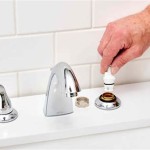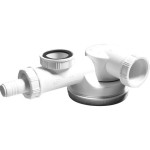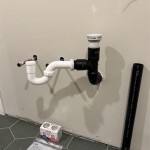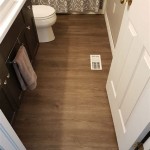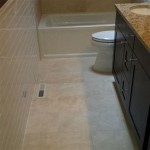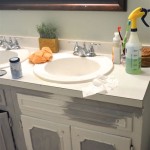How to Lay Large Bathroom Floor Tiles in Singapore
Laying large bathroom floor tiles in Singapore can be a rewarding DIY project. These tiles offer a sleek, modern aesthetic and are durable enough to withstand the high traffic and moisture levels common in bathrooms. However, the process requires careful planning and execution to achieve a professional finish. This guide will provide a step-by-step breakdown, covering essential tools, materials, and techniques to ensure a successful tiling project.
1. Planning and Preparation
Before embarking on the project, meticulous planning is crucial. This step involves assessing the bathroom space, selecting the right tiles, and gathering necessary tools and materials.
a. Measuring and Assessing the Space
Begin by carefully measuring the bathroom floor area. Account for any existing fixtures, such as toilets, showers, or vanities, and factor in their placement. This precise measurement will determine the tile quantity required. Consider the layout pattern, whether it's a simple grid or a more intricate design. For large tiles, a basic grid pattern is recommended for ease of installation.
b. Selecting the Right Tiles
The choice of tiles significantly impacts the final look and functionality of the bathroom. Large format tiles, typically measuring 12 inches or larger, are popular for creating a spacious and modern feel. Consider the tile material, such as porcelain or ceramic, as they offer varying levels of durability, water resistance, and slip resistance. Evaluate the tile color, style, and finish, ensuring they complement the overall bathroom design. Consult with a professional tile supplier to select appropriate tiles for your specific needs.
c. Gathering Tools and Materials
A comprehensive toolkit is essential for laying large bathroom floor tiles. This includes a tile cutter, grout float, level, tape measure, pencil, trowel, tile spacers, bucket, sponge, and cleaning supplies. You will also need tile adhesive, grout, and sealant. Depending on the tile material and installation method, specific additional tools may be required. Consulting with a professional tile installer can provide guidance on the necessary equipment and materials.
2. Preparing the Subfloor
A solid and level subfloor is paramount for a successful tile installation. This step ensures the tiles are laid evenly and prevents cracking or movement over time.
a. Ensuring a Level Surface
Begin by inspecting the existing bathroom floor for any unevenness, cracks, or slopes. If necessary, use a self-leveling compound to create a smooth and level surface. This compound dries quickly and ensures a consistent foundation for the tiles. Ensure the compound is fully dried before proceeding to the next step.
b. Applying a Moisture Barrier
In humid Singapore, a moisture barrier is essential to prevent water damage and mold growth. This barrier can be a sheet of polyethylene plastic or a specialized waterproofing membrane. Install the moisture barrier according to the manufacturer's instructions, ensuring it is properly sealed to the subfloor.
c. Installing a Tile Backer Board
For added protection against moisture, consider installing a tile backer board over the moisture barrier. This cement board is specifically designed for tile installations and provides a durable, water-resistant surface. Secure the backer board to the subfloor with screws or adhesive, ensuring it is flush with the surrounding walls.
3. Installing the Tiles
Once the subfloor is adequately prepared, the tile installation process can begin. This step requires precision, patience, and a keen eye for detail.
a. Spreading the Tile Adhesive
Apply the tile adhesive to the prepared subfloor using a notched trowel. The notch size should correspond to the tile size to ensure adequate coverage and bonding. Spread the adhesive evenly, creating a thin layer that will support the tiles. Avoid using too much adhesive, as it can cause unevenness and prevent the tiles from being properly set.
b. Laying the Tiles
Place the first tile at the center of the bathroom floor, using a level to ensure it is perfectly aligned. Continue laying tiles in a straight line, using tile spacers to maintain consistent grout lines. For large tiles, a wet saw may be required for precise cuts around fixtures or edges. Double-check the level and alignment of each tile as you progress. Remember to clean up any excess adhesive immediately to maintain a clean and professional finish.
c. Grouting the Tiles
After the adhesive has fully cured, apply grout to the gaps between the tiles. Use a grout float to spread the grout evenly and wipe away any excess. Allow the grout to dry completely, then use a damp sponge to clean the tiles and remove any remaining grout residue. Ensure the grout is sealed to prevent staining and maintain its appearance.
4. Final Touches
After the grout has dried, there are a few final touches that will enhance the overall look and functionality of the tiled bathroom floor.
a. Cleaning and Sealing the Tiles
Perform a thorough cleaning of the tiles using a cleaning solution specifically designed for tile surfaces. Remove any remaining grout residue, dust, or debris. Once the tiles are completely dry, apply a sealant to protect them from stains, water damage, and wear. This sealant will also make the tiles easier to clean and maintain their shine.
b. Installing Trim and Edging
If necessary, install tile trim or edging to cover raw edges or create a decorative finish. This is especially helpful for areas around the bathtub, shower stall, or sink. Choose tile trim that complements the color and style of the main tiles. Secure the trim using adhesive or screws, ensuring it is properly aligned and fitted.
c. Adding Finishing Touches
Once all the tiles are installed and sealed, add any finishing touches to complete the project. This can include installing baseboards, replacing any fixtures, or adding decorative accessories. It's important to thoroughly clean the bathroom floor before adding any final touches, as any debris or dirt can become permanently embedded in the grout.
Laying large bathroom floor tiles in Singapore involves a combination of careful planning, effective preparation, and meticulous execution. Following these steps will help you achieve a beautiful and long-lasting finish that enhances the aesthetic appeal and functionality of your bathroom. Consult with a professional tile installer for guidance or assistance, especially for intricate designs or complex installations.

Bathroom Tiling Toilet Singapore 2ezbuilders

7 Good Looking Ways To Lay Stacked Tiles
Bathroom Tiling Contractor Ager Flooring

Bathroom Tiling Toilet Singapore 2ezbuilders

15 Bathroom Floor Tile Ideas Home Decor Singapore

15 Bathroom Floor Tile Ideas Home Decor Singapore

15 Bathroom Floor Tile Ideas Home Decor Singapore

Bathroom Tiling Toilet Singapore 2ezbuilders

Bathroom Tiling Toilet Singapore 2ezbuilders

7 Best Places To Buy Tiles In Singapore Masons Home Decor
Related Posts
